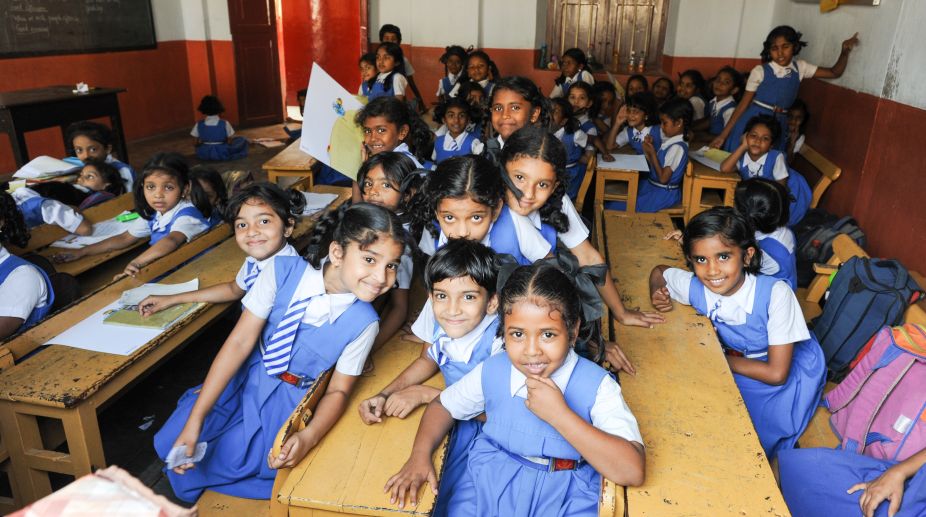Supreme Court stays Allahabad HC order on rape
The court observed that the judgment demonstrated a “total lack of sensitivity” on the part of the high court judge and showed "inhuman approach".

Representational image (Photo: Getty Images)
The Right of Children to Free and Compulsory Education Act was enacted in 2009. The RTE Act uniquely creates an obligation for unaided private schools located within a range of one km from the house of an applicant to provide primary education until class 8 free of cost.
For the education provided, such unaided private school could seek reimbursement from the state. The RTE Act, 2009 endeavors to create an egalitarian society promoting equality of opportunity and outcome to children from economically weaker section (EWS) and disadvantaged category (DG).
Advertisement
The recent judgment passed by the Hon’ble Allahabad High Court in Sudheer Kumar v. State of U.P. has universal appeal and ubiquitous utility.
Advertisement
This judgment could set right what is wrong with the interpretation of the concept of ‘neighbourhood’ under the RTE Act, 2009 in India. The Allahabad High Court passed this order while hearing a petition of a manual labourer whose five year old son applied for admission in a prestigious private school in Allahabad, and was spurned.
The reason supplied by the school was that the applicant failed to comply with the neighbourhood criteria as laid down in the U.P. RTE Rules of 2011.
The concept of neighbourhood purports to provide education to EWS and DG students in private unaided schools that fall within the range of one km from the house of a child. The rules drafted pursuant to RTE, 2009 in almost all the states endeavor to adopt this definition of neighbourhood. This has been done to promote the value of certainty and avoid any unsolicited chaos relating to admission.
In the absence of this rule, a child from any part of the district could have applied to any school, and this would have invested the school with an unfettered power to discriminate amongst the applicants in deciding the beneficiary.
This rule of one km guides the discretion of the schools and shackles it by setting out geographical contours in providing admission to applications. The Allahabad High Court, in a detailed judgment, held that neighbourhood criteria cannot mutilate the pristine purpose of the RTE Act, 2009 which endeavors to provide primary education to EWS and DG children in private unaided schools.
The judgment is unique in its ability to usher the jurisprudence on RTE Act, 2009 by equitably interpreting the neighbourhood criterion to grant relief to millions of children in the state. In Sudheer Kumar, the High Court made the distinction between those instances in which applications are more than the seats in a school and those in which seats are more than the applications.
The court majestically fused the principles of equity with right and gave it a tinge of altruism by spelling out that the concept of neighbourhood shall only apply in those cases where seats are less and students are more and not in those instances where seats are more than the students.
The court asserted that a subordinate law cannot subvert the principles ensconced in the enabling statute. This extraordinary interpretation echoes the spirit of 25 per cent in the RTE Act, 2009 and reinstates the hope of a weak parent in obtaining what is due to her – her rightful claim.
The use of ‘costs’ in imposing an obligation to provide for free senior secondary education is new to the jurisprudence of socio-economic rights.
Since the litigation led to wastage of an academic year of the child, the court imposed costs on the school, and directed it to provide additionally education from class 9 to class 12 for free. This moral invocation of cost imbued with elements reflecting importance associated with primary education, might check the impishness of private schools.
To conclude, this judicious interpretation may go a long way in informing the other states in interpreting the neighbourhood criteria in promoting values of equity and equality.
The healing ability of this judgment could downplay the role of destiny, and offer a fair chance to millions of children across India in leading a dignified life.
(The author is Assistant Director of the Legal Aid Clinic at JGLS, and wrote the writ petition in Sudheer Kumar v. State of U.P)
Advertisement
The court observed that the judgment demonstrated a “total lack of sensitivity” on the part of the high court judge and showed "inhuman approach".
The Allahabad High Court Bar Association (AHCBA) has raised objections to the Supreme Court Collegium’s decision to transfer Justice Varma to the Allahabad High Court.
On the orders of the Allahabad High Court, Archaeological Survey of India (ASI) in the presence of a mosque team commenced the white washing and painting of the outer walls of Jama Masjid here from Sunday morning.
Advertisement
